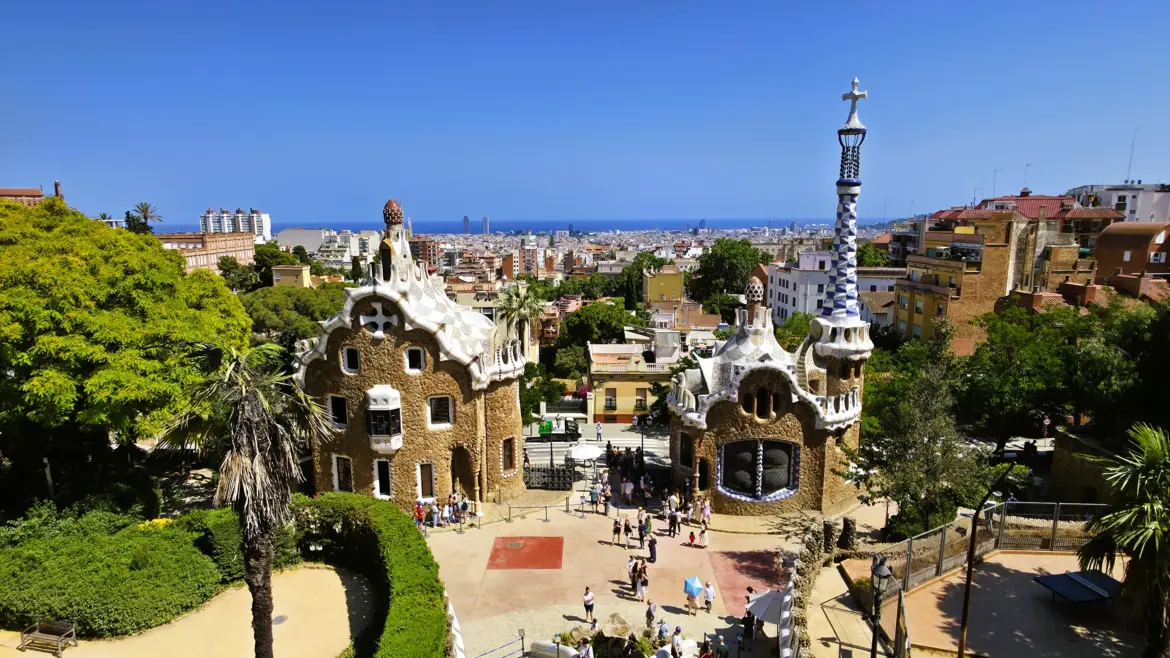Hola, my lovely travelers! Barcelona glowed that morning, the kind of soft Mediterranean light that seems to make colors hum. As I climbed Carmel Hill, the city unfolded below in shades of terracotta, sea blue, and gold. Birds darted through palm fronds, and the air smelled faintly of pine and jasmine. And then I saw it: curves of mosaic gleaming like jewels, towers capped with candy-colored domes, pathways curling into the hillside. Park Güell felt less like a place and more like a dream made real, a world where architecture blooms and nature speaks in color.
A Park Born from a Vision
At the turn of the 20th century, Barcelona was alive with creativity. The Catalan Modernism movement, Catalonia’s answer to Art Nouveau, sought to fuse craftsmanship, symbolism, and beauty into everyday life. In 1900, industrialist and art patron Eusebi Güell envisioned a garden city inspired by the English model: elegant houses set among greenery, far from the industrial bustle. He turned to his friend and collaborator, Antoni Gaudí, already celebrated for his audacious designs at Palau Güell and Colònia Güell.
Together, they imagined a utopia of 60 villas connected by sinuous paths, with panoramic views of the sea. Yet the project struggled – the steep terrain, economic downturns, and limited interest meant that only two houses were ever built. By 1926, the land was sold to the Barcelona City Council, transformed into a public park, and ultimately declared a UNESCO World Heritage Site. What was once a failed real-estate dream became one of the world’s most enchanting expressions of imagination.
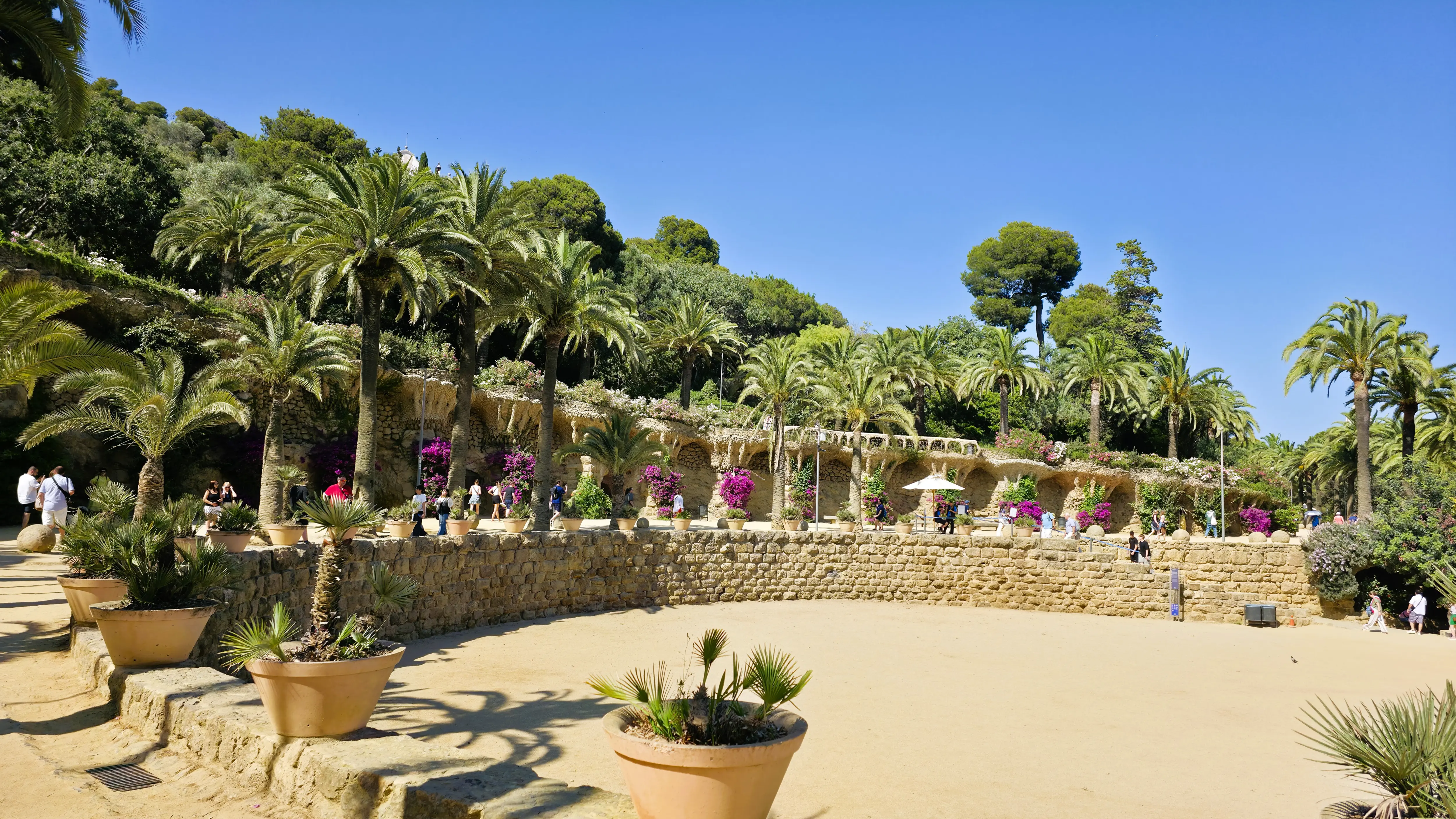
Gaudí’s Philosophy: Harmony with Nature
For Gaudí, nature wasn’t a backdrop, it was the blueprint. “Originality,” he said, “consists in returning to the origin.” In Park Güell, every curve and column follows that belief. He studied how trees bend under wind, how honeycombs distribute weight, how waves curve upon the shore. From those lessons came the park’s organic forms:
- Viaducts that rise from the hillside like roots made of stone.
- Columns shaped like palm trunks, supporting terraces like canopies.
- Tiles that shimmer like dragonfly wings in the sun.
Even Gaudí’s materials came from the earth beneath his feet – rough local stone, clay, and recycled ceramics. His vision was centuries ahead of its time: architecture that sustains and blends with nature. The park unfolds as a symbolic ascent – from the earthly entrance to the airy terrace above, echoing Gaudí’s spirituality and belief that beauty leads us closer to the divine.
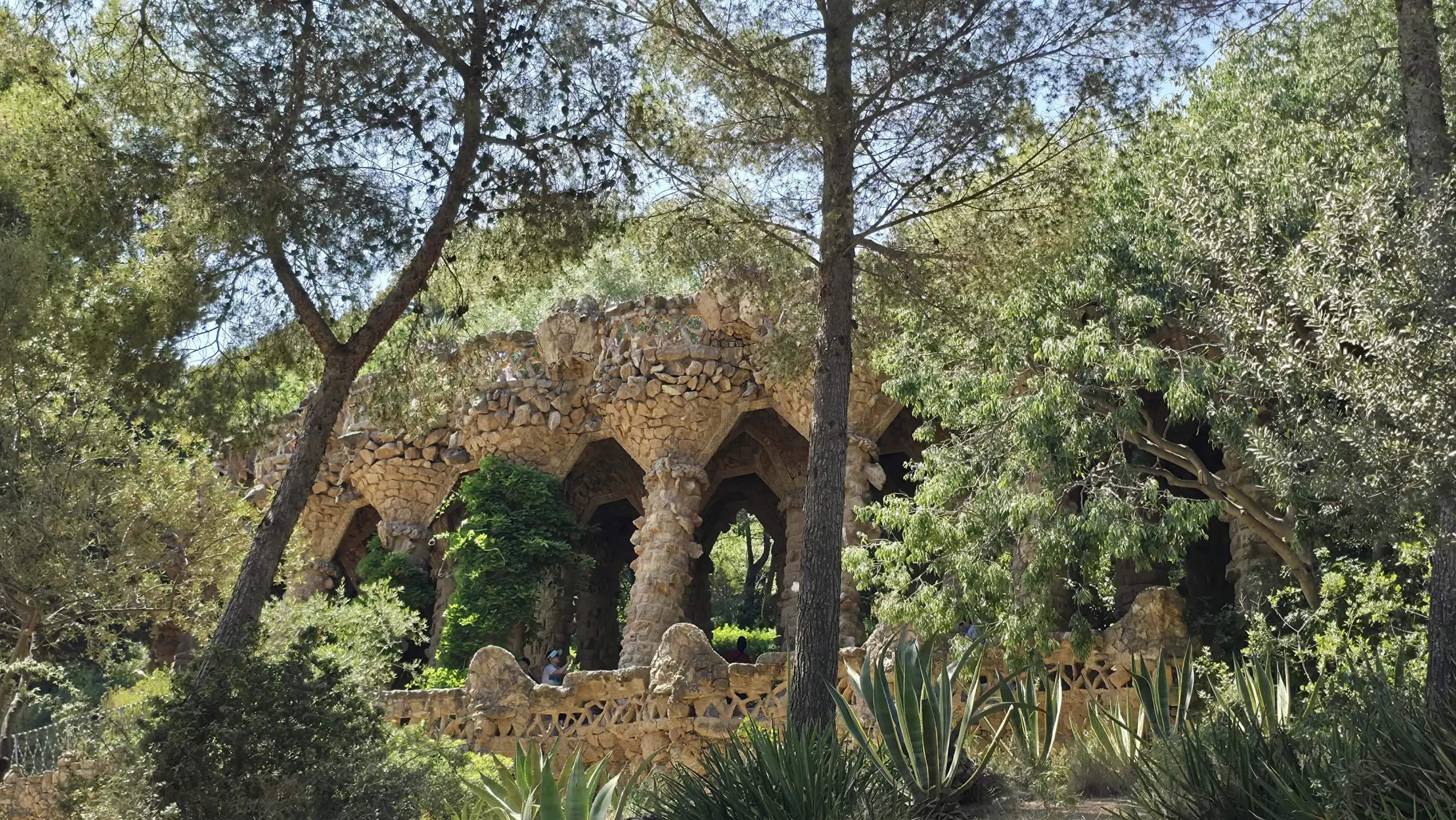
What to See in Park Güell
1. The Entrance Pavilions
Stepping into Park Güell feels like entering a fairy tale. Two whimsical gatehouses – one cream and one caramel brown – greet visitors with their sugar-like turrets and mosaic roofs. Designed for the park’s caretaker and porter, they now house a shop and exhibition. Their playful shapes earned the park its “gingerbread village” nickname.
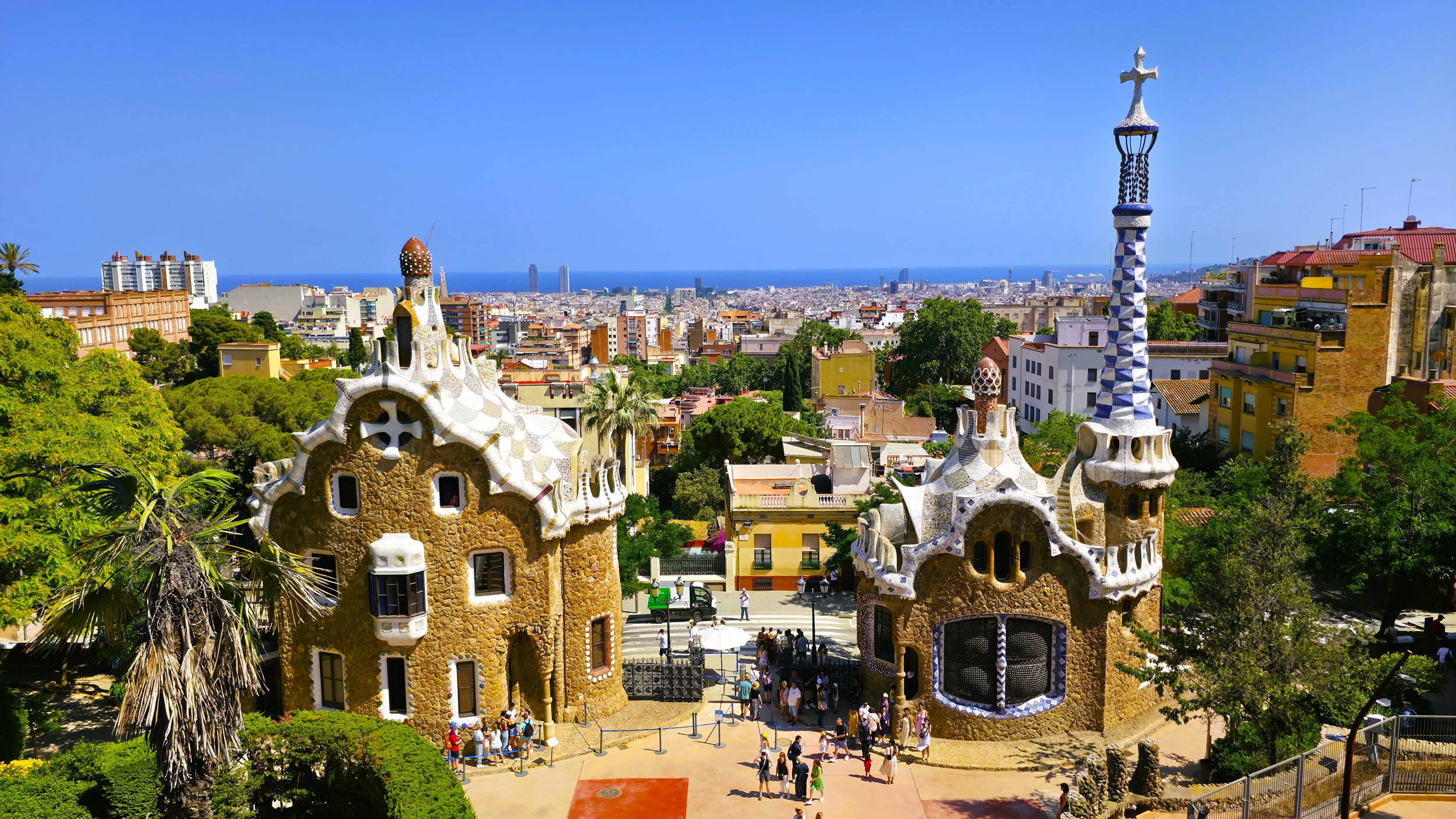
2. The Dragon Stairway (Escalinata del Drac)
Climbing the grand staircase, you’ll meet the park’s most beloved guardian: the mosaic dragon, affectionately known as El Drac. Crafted in trencadís (broken-tile mosaic), he shimmers in blue, green, and orange, symbolizing life, protection, and rebirth. The stairway’s three fountains beneath him represent the Catalan regions of the time, each framed by water, the element of renewal.
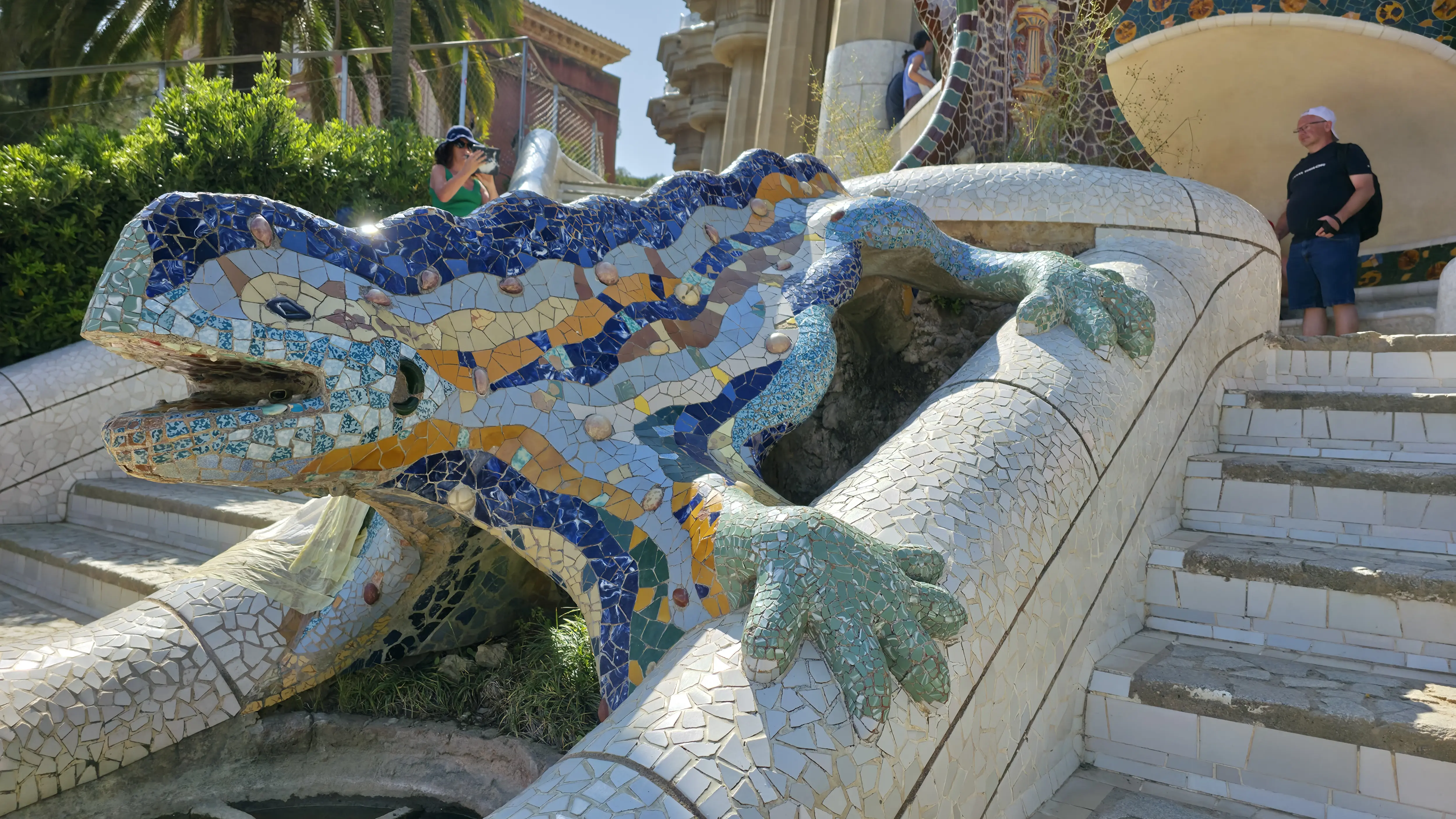
3. The Hypostyle Room (Hall of a Hundred Columns)
Above the stairway lies a forest of 86 Dorically inspired columns. Their white surfaces reflect sunlight, while circular mosaic medallions glow like underwater corals. Originally meant as a market hall, this space also supports the terrace above and channels rainwater through ingenious drainage hidden within the columns, one of Gaudí’s earliest eco-design feats.
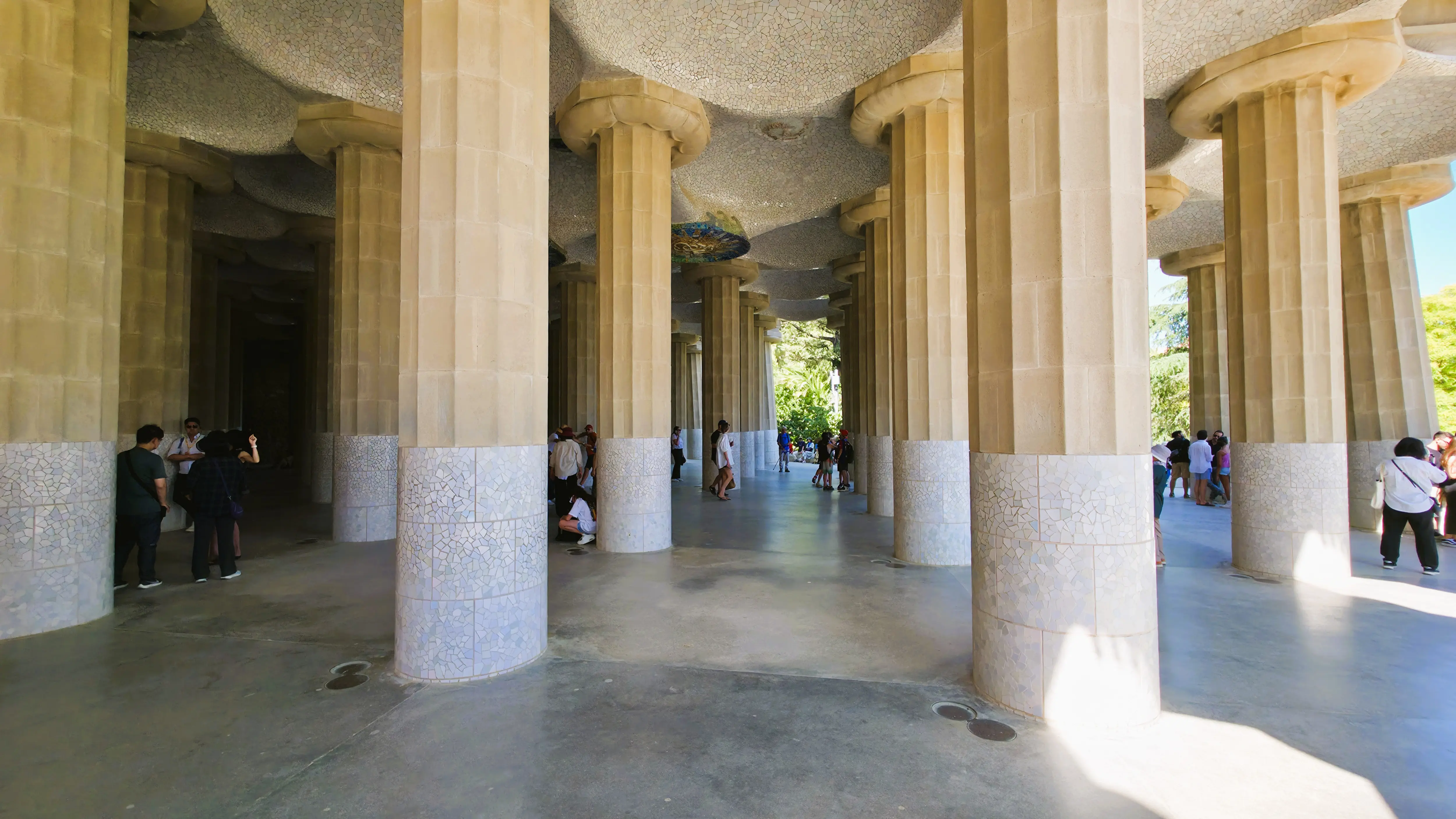
4. The Nature Square (Plaça de la Naturalesa)
Emerging from the Hypostyle Room, you reach an open terrace that feels suspended between earth and sky. The serpentine bench, designed by Gaudí’s collaborator Josep Maria Jujol, ripples along its edge like an ocean wave. Its mosaics, made from recycled ceramics donated by local factories, form patterns of suns, spirals, and flowers. From here, you can see the entire city stretching toward the sea, a breathtaking view that defines the Barcelona skyline.
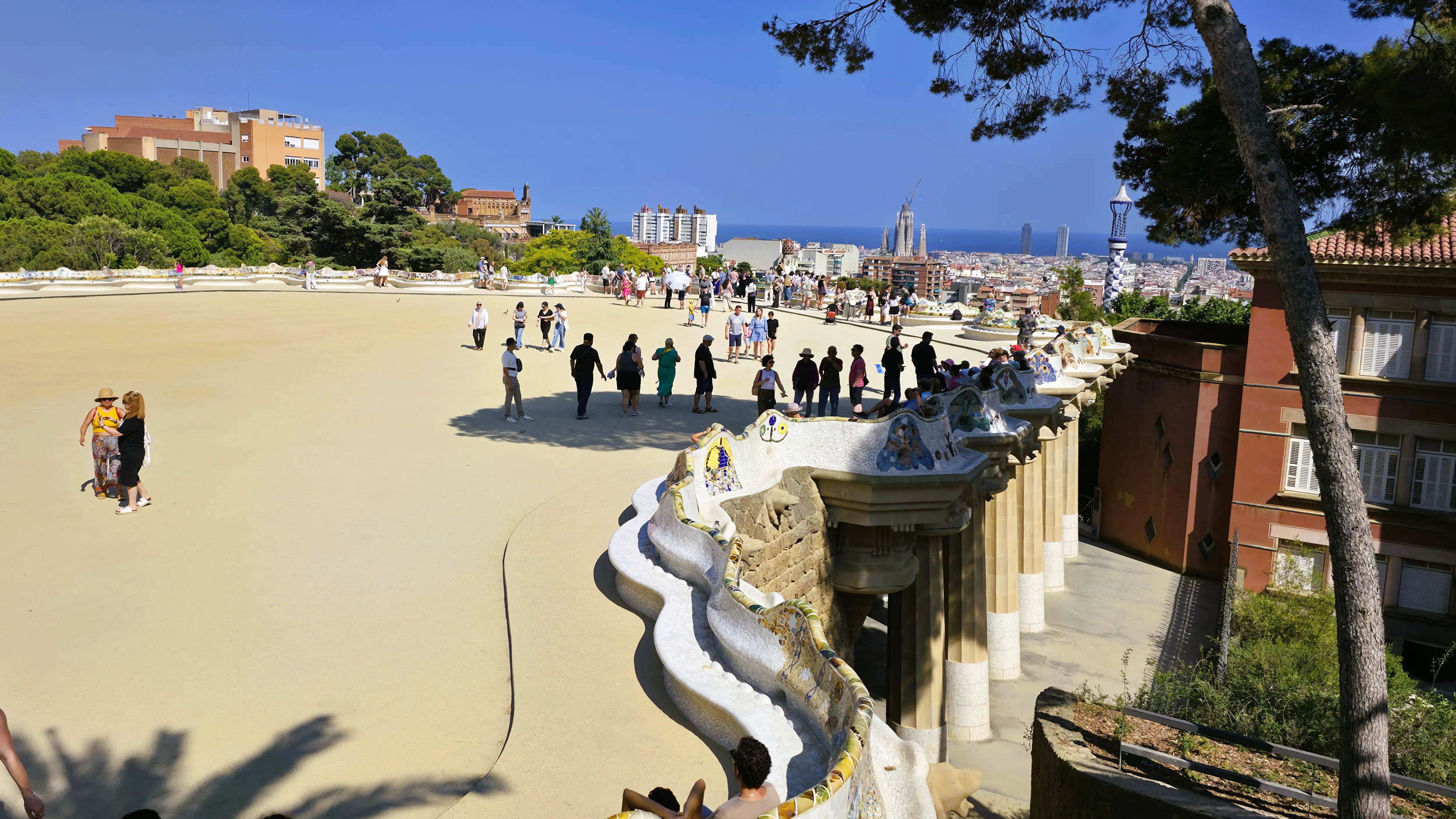
5. The Portico of the Washerwoman & Viaducts
Wander further into the park and you’ll find shaded paths supported by stone columns that lean like trees in the wind. The Portico of the Washerwoman, with its spiral curve, feels both natural and surreal, as if carved by water over centuries. The viaducts were built to allow carriages to move through the estate while keeping harmony with the hillside, function and beauty intertwined.
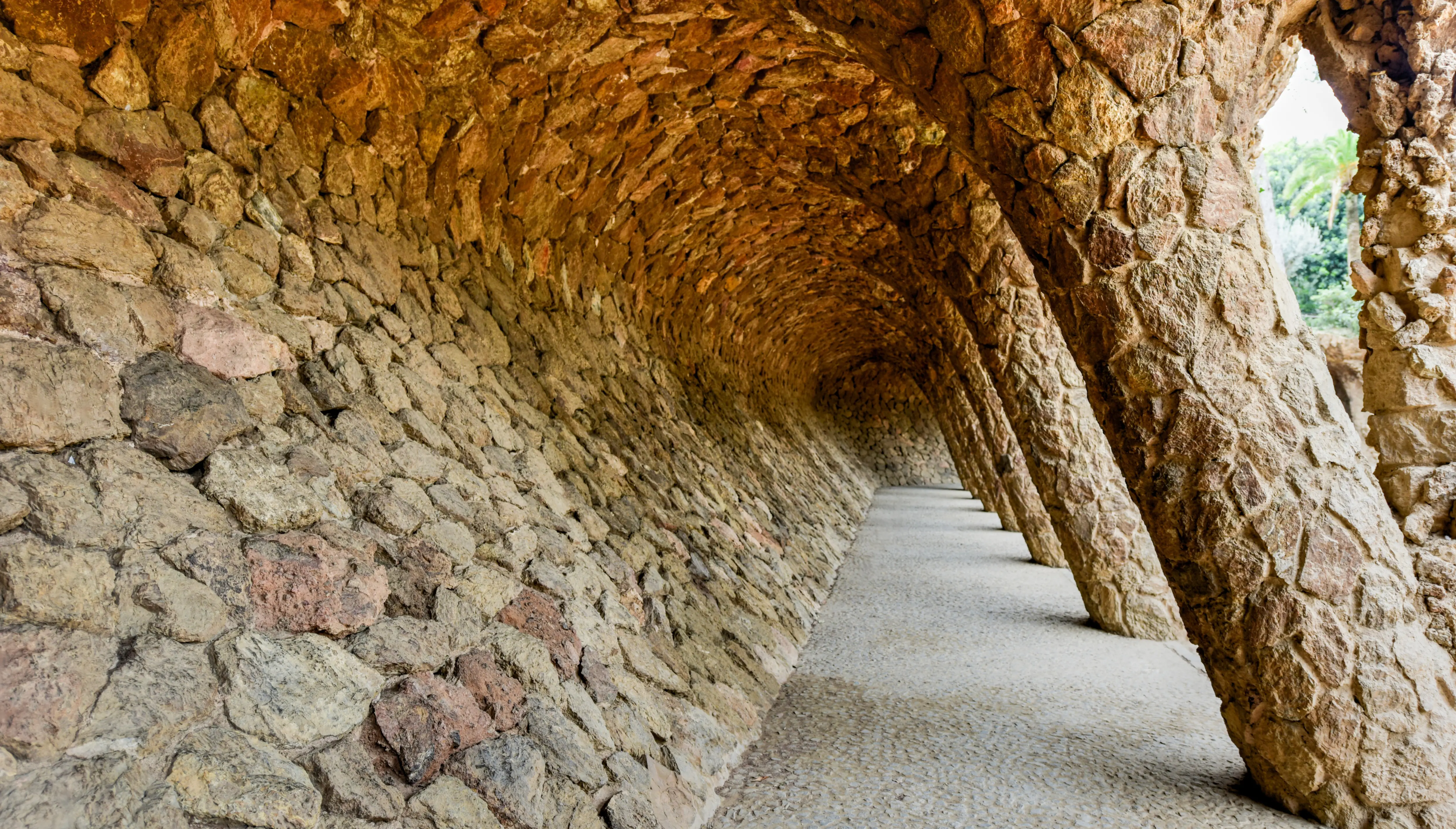
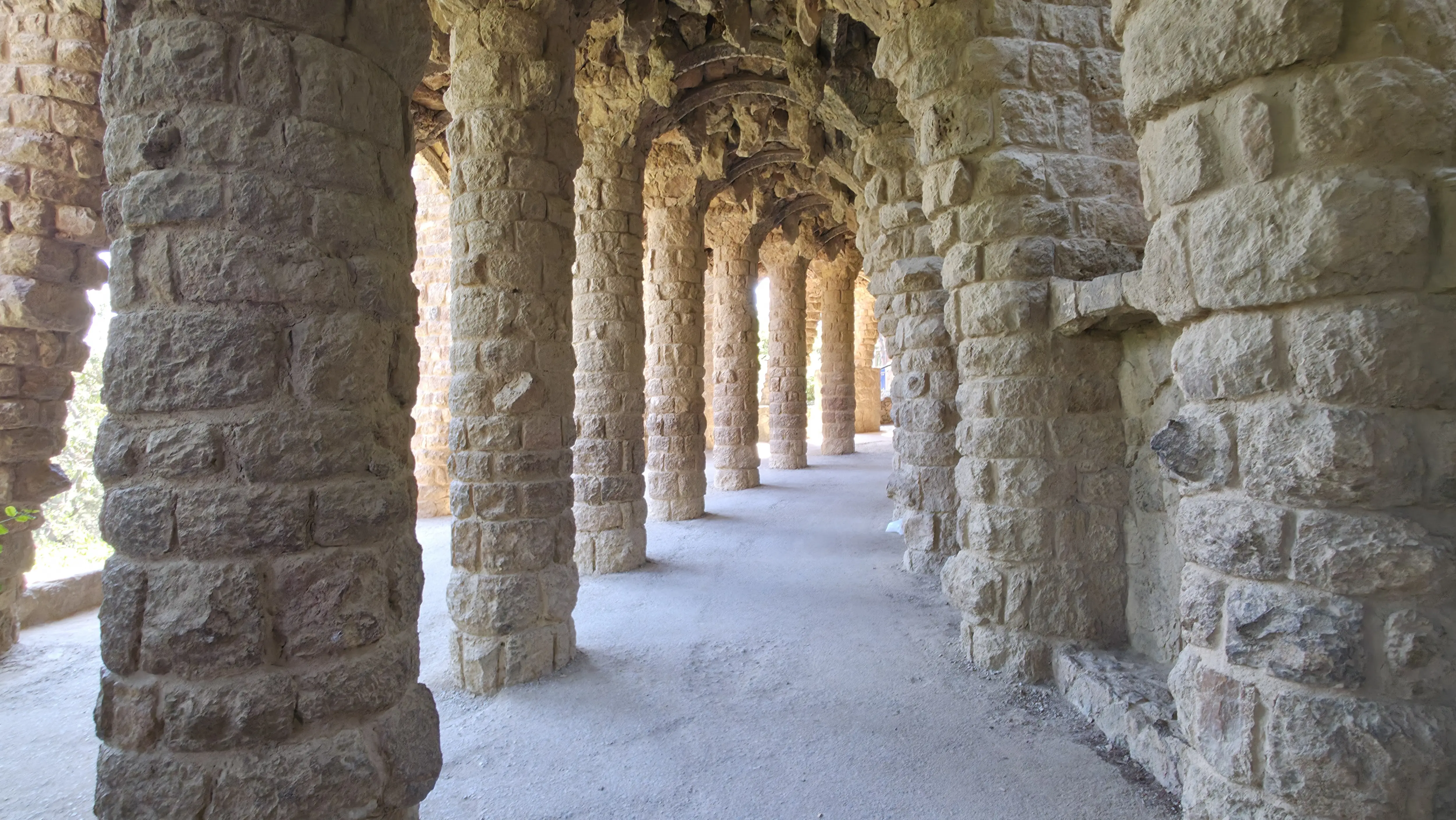
6. Gaudí House Museum (Casa Museu Gaudí)
Nestled in the park’s quieter residential zone stands the rose-colored house where Gaudí lived for nearly 20 years. Inside, the museum preserves his furniture, sketches, and personal effects, revealing the simplicity behind his genius, a man devoted to faith, craft, and quiet contemplation.
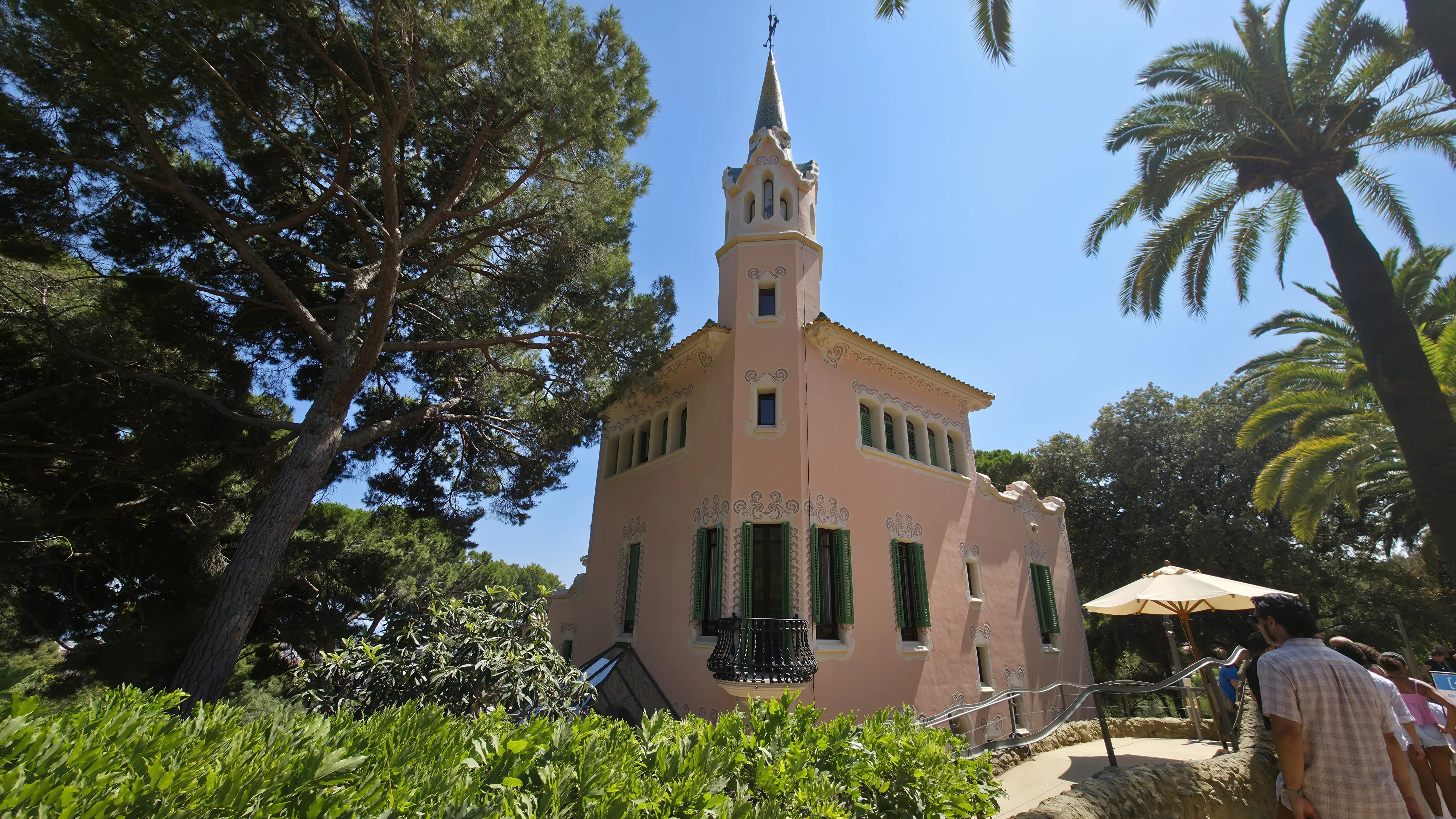
Through My Eyes
I arrived early, before the crowds, and wandered through the dewy paths. The city stretched below like a mosaic itself, every rooftop a tile, every breeze a note of music. As I climbed the stairway, sunlight danced across El Drac’s scales. Children laughed nearby, musicians played soft flamenco in the distance, and pigeons fluttered across the Hypostyle Room’s columns. I sat on the serpentine bench, the tile cool beneath my palms, and felt the whole park breathing, a dialogue between stone and sky.
There’s something wonderfully human about Park Güell: it celebrates imperfection, whimsy, and joy. The colors don’t match perfectly; the lines curve instead of straighten, and that’s precisely what makes it timeless. It reminds you that imagination, when rooted in love for nature, never fades.
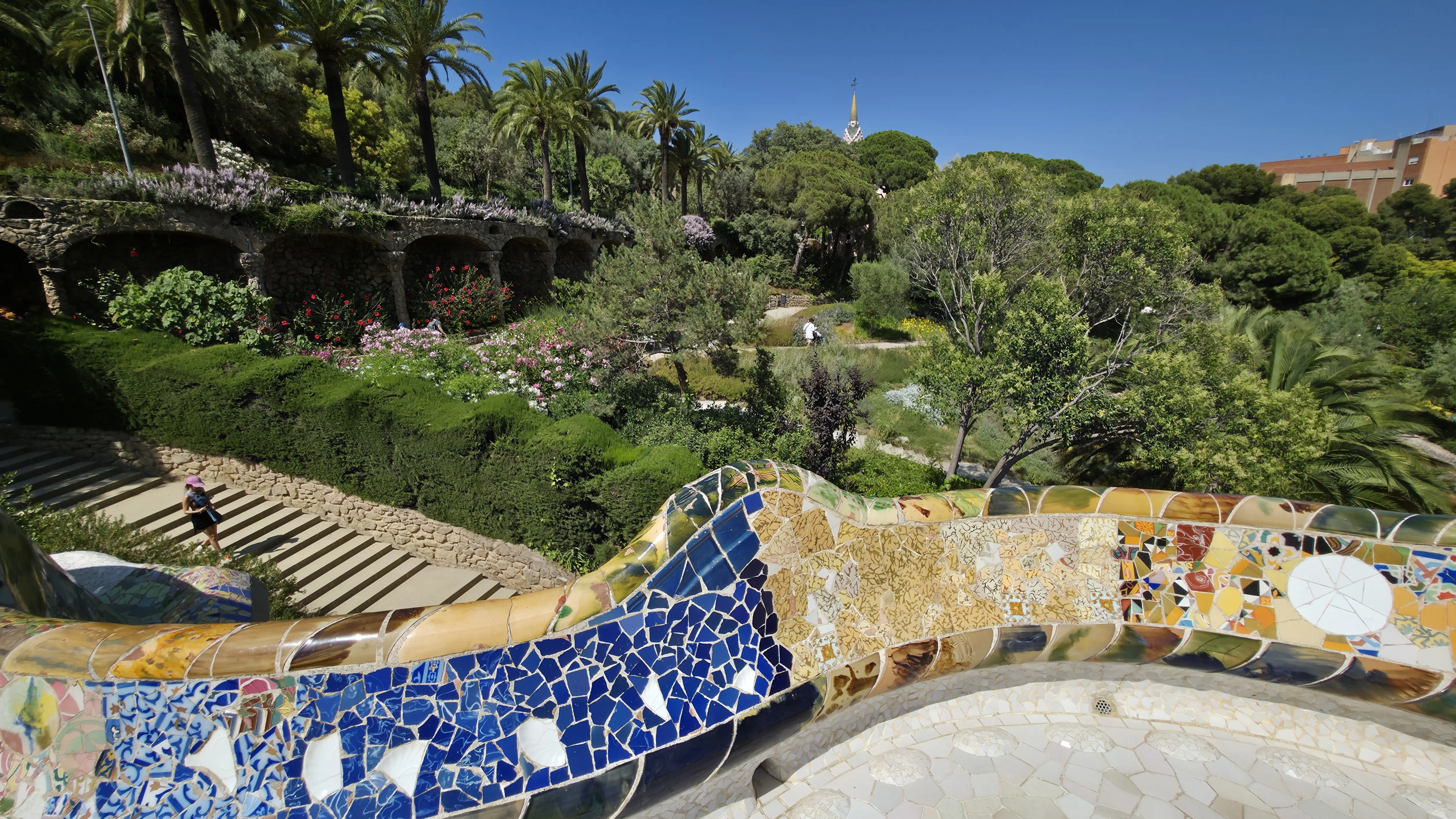
Practical Tips for Visiting Park Güell
- Tickets: Reserve online early. Entry to the Monumental Zone (main architectural area) is timed; other sections remain free.
- Hours: Typically 9:30 a.m.-7:30 p.m. (summer) / 9:30 a.m.-5:30 p.m. (winter).
- Location: Carrer d’Olot, Gràcia District, Barcelona (near Carmel Hill).
- How to Get There: Metro L3 (Lesseps or Vallcarca) + 15 min walk uphill | Bus 24 or Bus 92 to the main entrance.
- What to Wear: Comfortable shoes, expect uneven paths and stairs.
- Best Time to Visit: Early morning or sunset for soft light and fewer crowds.
- Photography Tips: Capture El Drac early for fewer people, and don’t miss sunset from the terrace for golden-hour magic.
- Nearby: Bunkers del Carmel (viewpoint), Gràcia neighborhood cafés, and Casa Vicens, another Gaudí gem.
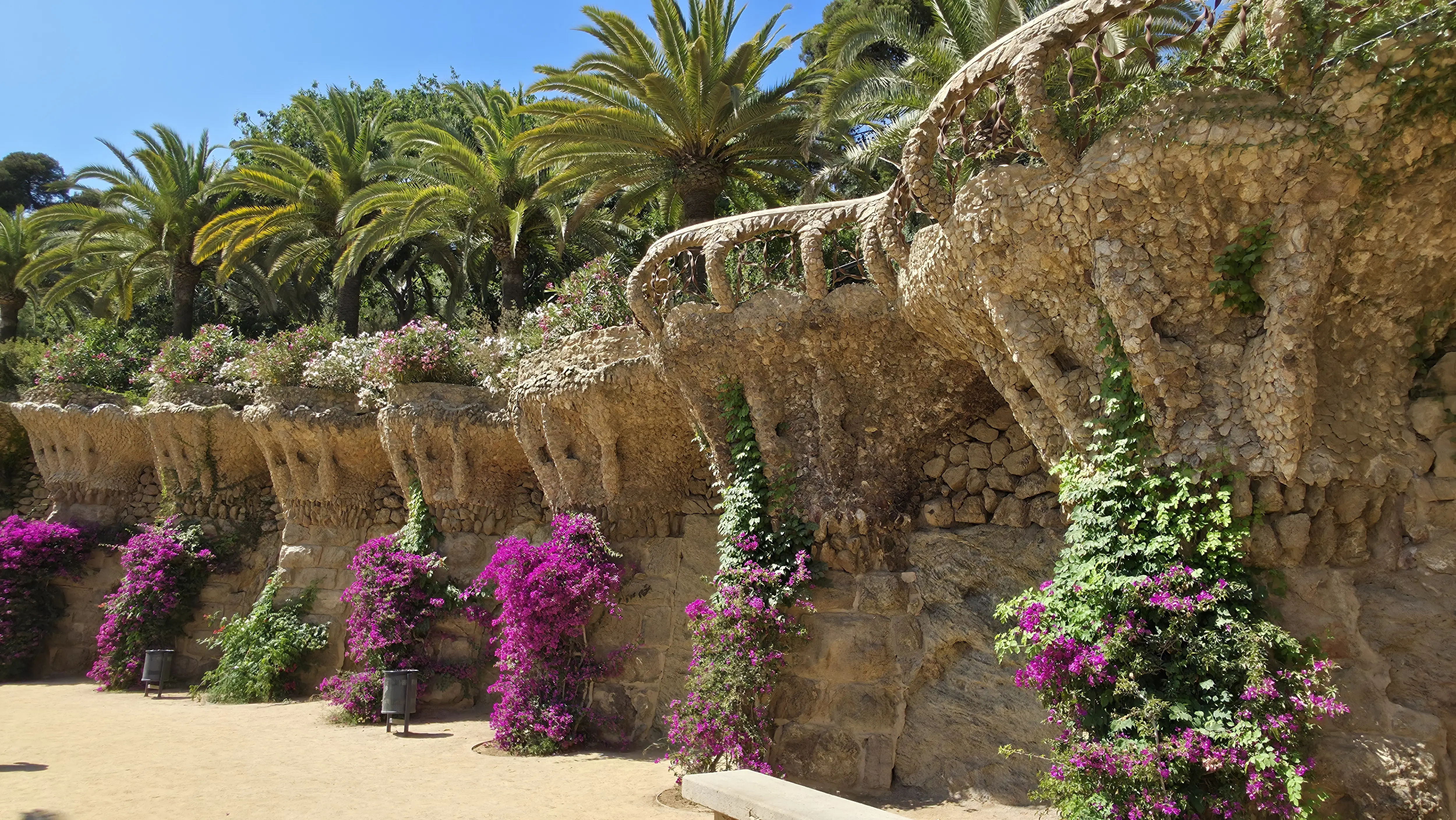
Final Thoughts
Park Güell is more than a landmark, it’s a conversation between art and nature, between imagination and faith. Gaudí believed that beauty could bring people closer to the divine, and here, among the mosaics and olive trees, that belief feels tangible.
As I wandered back down toward the city, I turned once more to the dragon at the gate – playful, proud, eternal. There was a glint of sunlight across its scales, as if Barcelona itself had smiled. But the story doesn’t end here, because that dragon is only one of many.
Tomorrow on Bubbly Living, we’ll chase the dragons of Barcelona, from rooftops and façades to legends that still breathe through this city of dreams.
xoxo,
Bubbly🎈

